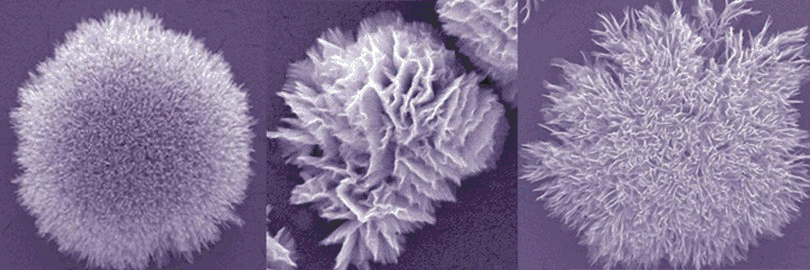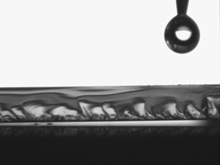OBJECTIVES
To induce structuration effects on thin films through a liquid solution route
To induce structuration effects on thin films through a liquid solution route
Highlight
The deposition of nanospheres (e.g. polystyrene) followed by i/ their impregnation with a solution arising from sol-gel and/or hydrothermal synthesis approaches, and ii/ their subsequent elimination, leads to structured oxide thin films of enhanced roughness while preserving a high optical quality of the film.
The synergy between natural wettability properties and roughness effects enables to enhance the natural superhydrophilicity persistence of nano-composite TiO2-SiO2 films, or to propose a simple approach to produce superhydrophobic films trough a non-fluorinated sol-gel route.
The synergy between natural wettability properties and roughness effects enables to enhance the natural superhydrophilicity persistence of nano-composite TiO2-SiO2 films, or to propose a simple approach to produce superhydrophobic films trough a non-fluorinated sol-gel route.
Contact
FM2N Research topics
- Nanowires, Thin Films & Heterostructures as ...
- Wet Chemistry & Surface Functionalization
- Transparent Conducting Materials
- Physical Chemistry at Interfaces, advanced structural characterization
Main publications
M. Messaoud, M. Houmard, S. Briche, F. Roussel, M. Langlet,
Hydrophobic functionalization of cotton-based textile fabrics through a non-fluorinated sol-gel route, J Sol-gel Sci Technol, 55(2) (2010) 243.
C. Holtzinger, B. Niparte, G. Berthomé, D. Riassetto, M. Langlet,
Morphology-wettability relations in artificially structured superhydrophilic TiO2-SiO2 composite films, J Mater Sci, 48(8) (2013) 3107.
C. Holtzinger, B. Niparte, S. Wächter, G. Berthomé, D. Riassetto, M. Langlet,
Superhydrophobic TiO2 coatings formed through a non-fluorinated wet chemistry route, Surf Sci, 617 (2013) 141.
Hydrophobic functionalization of cotton-based textile fabrics through a non-fluorinated sol-gel route, J Sol-gel Sci Technol, 55(2) (2010) 243.
C. Holtzinger, B. Niparte, G. Berthomé, D. Riassetto, M. Langlet,
Morphology-wettability relations in artificially structured superhydrophilic TiO2-SiO2 composite films, J Mater Sci, 48(8) (2013) 3107.
C. Holtzinger, B. Niparte, S. Wächter, G. Berthomé, D. Riassetto, M. Langlet,
Superhydrophobic TiO2 coatings formed through a non-fluorinated wet chemistry route, Surf Sci, 617 (2013) 141.




